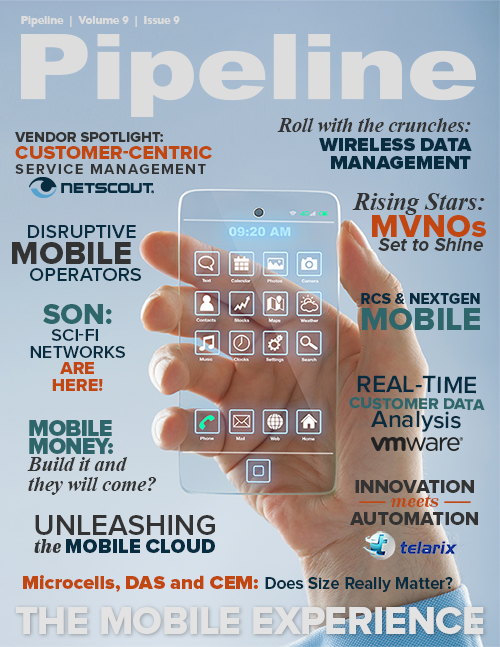Learning the Mobile Magic of Disruptive Operators
How’d Free do it? By developing an innovative set-top box for broadband internet, video and VoIP (voice over IP) customers that functions as a nanocell. The box was created in-house, runs on a fiber backbone and separates the private Wi-Fi network of the home user from the public Wi-Fi used by the mobile network; some of the boxes even have a built-in cellular femtocell. In essence, every new terrestrial customer that Free adds expands the operator’s network infrastructure. And instead of charging a fee for the set-top box, as MSOs (multiple system operators) and MNOs (mobile network operators) might in the US, Free provides the unit for — you guessed it — free. It’s also built out its own HSPA+ cellular network, but the cornerstone of its triumph is clearly Wi-Fi.
Tapping overcapacity, particularly if fiber is the backbone, is an innovative strategy that’s generating continued interest from service providers, especially in light of Free’s success.
“An incredible amount of Wi-Fi access points have been deployed at homes and small offices, often with good backhaul capacity,” says Wård. “Operators can tap these access points for public use by implementing two separate parts [service set identifiers, or SSIDs]: one for the subscriber and one for public use. We’re seeing a strong interest among our operator customers for this concept, because we can make sure that the subscribers never suffer from this, as only excess capacity is used. Just think about a big cable operator — they can potentially create a huge hotspot network virtually overnight.”
Network operators who don’t have their own massive Wi-Fi resources or a set-top box that functions as a nanocell can still jump on Wi-Fi options with a partner. Madrid-based Fon, for instance, uses the same model as Free for its terrestrial customers: its Fon Spots share Wi-Fi with the greater community, creating an ever-growing mega network. Numerous mobile operators have partnered with Fon to tap into this network of more than seven million access points, including BT and Mobile TeleSystems (MTS).
Next-gen OSS/BSS
It’s no secret that legacy OSS/BSS, or operations and business support systems, and their disparate silos of data have created a headache for many service providers. By utilizing less complex, more modern operational and back-end software that’s engineered from the ground up to support next-gen telcos, service providers can realize substantial benefits.
E-Plus replaced its OSS/BSS with Comarch solutions and didn’t look back. The business software provider’s “skills and OSS strategy helped us [make a] smooth transition from complex legacy architecture and processes into [a] new, lean approach for network planning, delivery and integration,” said Bernd Kreiling, E-Plus’s department manager for processes and support. The disruptive operator saw a 50 percent improvement in overall business-process efficiency.
C Spire Wireless replaced its back-end CRM (customer relationship management) structure with a system from Credera that sparked such significant change that InformationWeek recognized C Spire as a top innovator in telecommunications for 2012. The Credera implementation, with its configurable rules engine and deep integration with billing, allowed C Spire to condense an eight-screen process into a single-screen, holistic customer view, resulting in sizable improvements in customer service.
Leveraging the power of the internet for automation
The continued success of information technology rests on a fundamental maxim: Automation and virtualization save money. Service providers who effectively leverage the power of the internet can lower costs and even improve the customer experience. Telmore, for one, embraced an unheard-of idea among MVNOs: internet-based sales and service. The operator paid close attention to other industries (airlines and hotels, in particular), applied what it learned and began using the internet as its primary channel for sales and service, greatly compressing its cost structure.
Today, with the dawn of cloud computing, the advantages are even greater. MetraTech offers solutions that can be deployed in the cloud, plus an automated turnkey solution for billing and customer care. Similarly, E-Plus, Free and C Spire lean heavily on customer portals and social media to engage with their customers in a low-cost manner.


















